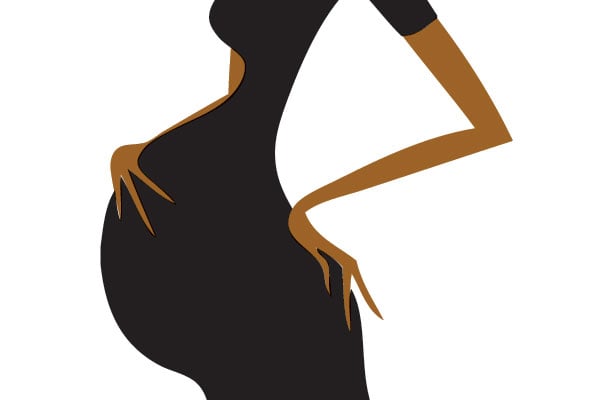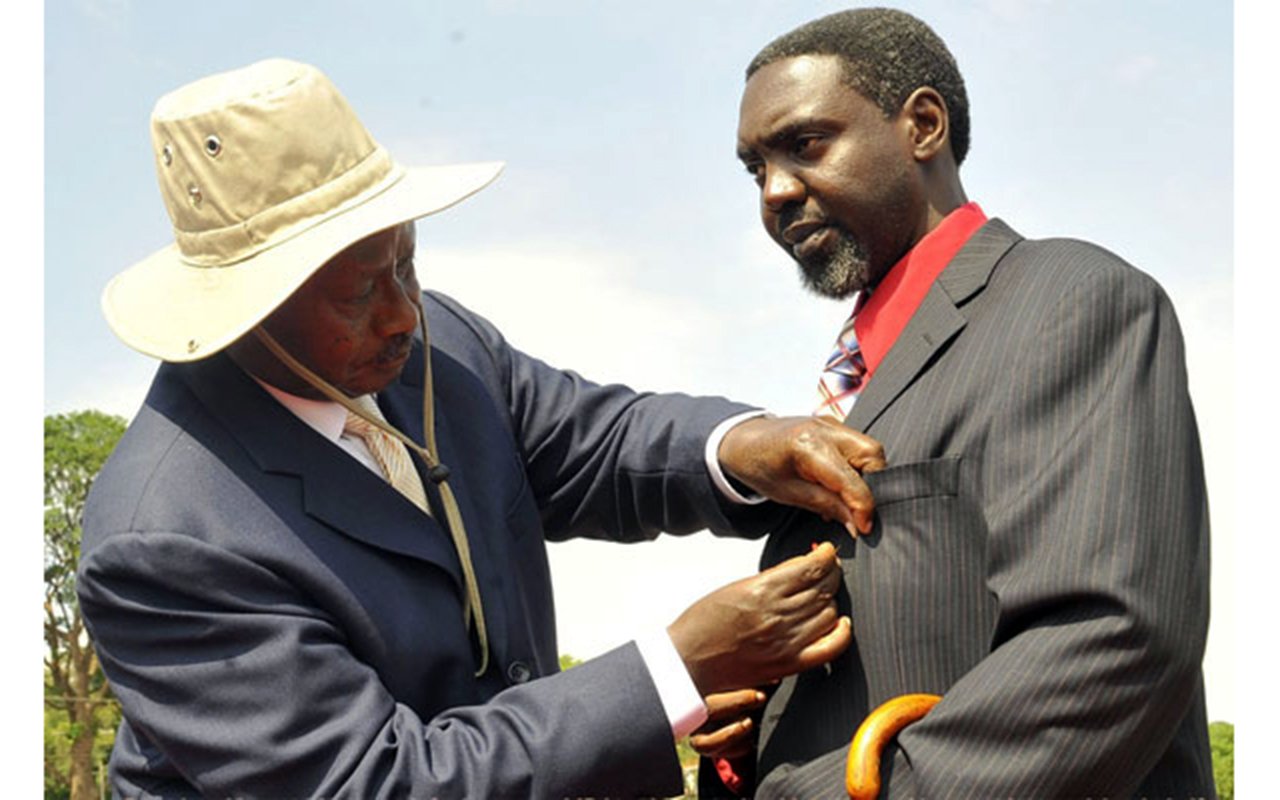Teenage pregnancy: A big threat to Uganda’s girl-child

What you need to know:
World Population Day is an annual event, observed on July 11, which seeks to raise awareness of global population issues. The event was established by the Governing Council of the United Nations Development Programme in 1989.
It was inspired by the public interest in Five Billion Day on July 11, 1999, approximately the date on which the world’s population reached five billion people. As the world population edged to 7 billion people in 2011 (up from 2.5 billion in 1950), it has had profound implications for development.
A world of 7 billion is both a challenge and an opportunity with implications on sustainability, urbanisation, access to health services and youth empowerment. About 16 million girls under age 18 give birth each year.
Another 3.2 million undergo unsafe abortions. The vast majority – 90 per cent -- of the pregnant adolescents in the developing world are married. But for far too many of these girls, pregnancy has little to do with informed choice. Often it is a consequence of discrimination, rights violations (including child marriage), inadequate education or sexual coercion.
Resty Nakayenga is a Senior 3 student at Kasambya Parents Secondary School. Nakayenga, who is a mother of a one-and-a-half-year-old child, says she was raped and made pregnant at 16 by a 40-year-old man whom her father had introduced to the family as “uncle.”
“He had borrowed our iron box and my father asked me to go and collect it. This man abused me and when I told him, he threatened violence. My parents managed to get him arrested but he paid money and he was released. He later moved away and I have not heard from him,” she recollects.
Nakayenga is among 24 per cent of teenage girls in sub-Saharan African, who get pregnant before the age of 19. Sadly, the statistics get worse when it comes to Uganda. According to the Uganda Bureau of Statistics, one in every four teenage girls between 15 and 19 was found pregnant.
The Population Secretariat indicates that of the 1.2 million pregnancies recorded in Uganda annually, 25 per cent of these are teenage pregnancies. These more than 300,000 teenagers who get pregnant also account for the bulk of unwanted pregnancies, which end up in unintended births or abortion.
This state of affairs has not spared either the school goers or the non-school goers. Needless to say, the effects spill over on to their health, economic and social status.
The World Population Day theme for this year, “Let girls be girls, invest in Teenage pregnancy,” could not be more timely. The day is celebrated every July 11 to raise awareness on global population matters.
According to the Uganda Demographic Health survey 2011, about 14 per cent of young women and 16 per cent of young men had their first sexual encounter before the age of 15 while 57 per cent of young women had their first encounter before the age of 18.
Early marriage, early initiation of sex and lack of information, are said to be the leading drivers of adolescent pregnancy. According to Dr Wilfred Ochan, the Assistant Country Representative United Nations Population Fund (UNFPA), lack of access to reproductive health information supported with services, has led teenagers into early sex while poverty and cultural practices continue to force girls into early marriages.
‘Parents fear’
Dr Ochan says sex education has not been given required attention in schools while parents fear to talk to their children about sex and reproductive health. There also seems to be a distinctive link between poverty and early pregnancies as data from the Uganda Bureau of Statistics shows that adolescents from poor families are more likely to get pregnant. The pregnancy rate for adolescents from these families stands at 41 per cent while that for adolescents from wealthier families is 17 per cent.
Like Nakayenga, some girls end up as young mothers after older men who abandon them have abused them sexually.
Findings from a study conducted by Guttmacher Institute on unintended pregnancy and abortion in Uganda indicate that 43 per cent of young mothers had been “unwilling” to have sexual intercourse.
Mubende District is said to be among the districts with a high number of teenage mothers with nearly one in every three households recording a teen that has got pregnant or has had a child. A visit to Kasambya County in Mubende District confirms that indeed adolescent pregnancy is a threat to the district’s development as the rate of school dropouts in the area is increasing day by day.
As a result, some of the schools in the area have had to implement the National Adolescent Policy, 2004 one that has been ignored by most school since its inception. The policy states that pregnant adolescent girls should be readmitted to school after they have delivered, but the policy remains unsupported by the country’s Education Policy.
Kasambya Parents Secondary School has become popular for opening its doors to the teenage mothers who have been shunned by authorities in other schools. Mr Lawrence Lumbuye, the school’s head teacher, says that the decision to implement the policy was informed by the number of dropouts the school was registering as a result of pregnancy while at the same time the boys, some of whom responsible were not being reprimanded.
“I embarked on the programme to return these girls to school after giving birth. It was not easy at the start since the girls suffered ‘self-inflicted’ stigma,” Mr Lumbuye says, adding that the school authorities took time to prepare both students and teachers to receive the young mothers and look at them as other students.
Currently, the school has 10 teenage mothers studying in Senior 2, 3 and 4. Information obtained from the Uganda Red Cross Society, Mubende branch, indicates that out of 69 female students in Senior 4 at Silver Steps Secondary School also in Kasambya, 39 are teenage mothers.
The situation at Kasambya Health Centre III is not any different. Records show that the facility helps an average of 45 young girls to deliver monthly, excluding those who get complications and are referred to Mubende District hospital.
The health centre midwife, Ms Josephine Namuleme, says that the rate at which “babies” are mothering babies is worrying. “I deliver at least one or two babies on a daily basis. For example, 36 teenage mothers delivered at the health facility in May 2013 alone while 171 registered for antenatal services in June,” she narrates.
The costs related to teenage pregnancies remain a big burden for the country since they are often not able to complete secondary school; which makes it difficult for them to find decent jobs to take care of themselves and their children.
Consequently, many children of teenage mothers are unable to get an education and they too are likely to fall into poverty creating a vicious cycle of early pregnancies, illiteracy and poverty which can be hard to break.
Dr Zeynab Akol in the department of reproductive health at the Ministry of Health, says that the implications of early pregnancy are immense, affecting the girls and their parents emotionally and economically. “For a young person to be pregnant, the complications associated with it include high risk of infections, delivery complications as well as maternal deaths,” says Dr Akol.
She also says the tendency for girls to want an abortion comes with a lot more challenges especially social confusion in implementing abortion policy on the side of health workers. “If a girl comes for an abortion, and you refuse to do it as a health worker, give her 72 hours and she will appear in your clinic in a more critical condition because she has done it elsewhere.”
Information from the World Health Organisation also shows that maternal deaths are higher in teenage mothers compared to older women. This poses a challenge in responding to maternal and infant mortality but also strains families in terms of providing health care to the teenage mother incase complications arise during pregnancy or during child delivery which, according to Dr Akol, are more likely to happen among teenagers than older women.
Dr Ochan says most of the complications come because the girls’ bodies are not fully developed to have bodies. “As such, they may suffer obstructed labour and uterus ruptures, all of which are life threatening while others may die during child delivery.”
In a paper published in the Sociology Journal under the authorship of Prof Gideon Rutaremwa, “Factors associated with adolescent pregnancy and fertility in Uganda: Analysis of the 2011 Demographic and Health Survey data”, 15 to 23 per cent of female youth between 15 and 24 have had an abortion greatly increasing the risk of disability and death for pregnant adolescents.
Impact
The paper also says that 13 out of every 100 deaths and 27 out of every 100 deaths among adolescents are primarily due to unsafe abortions while 24 per cent of women suffering from fistula are teenage mothers.
UNFPA Executive Director Babatunde Osotimehin says pregnancy complications are the leading cause of death among adolescent girls aged between 15-19, killing tens of thousands girls every year. “Preventing this tragedy requires that we protect their basic human rights and their rights to education and health, and that they are empowered to act in their own interests,” Dr Osotimehin says.
Uganda has a considerable number of policies designed to protect young females from getting pregnant during adolescence, including the National Health Policy, the National Adolescents Health policy, the sexual reproductive health minimum package, the minimum age of sexual consent policy, and the defilement law among others. These policies have not been implemented, leaving loopholes that are being exploited, against the teenage girl.
Experts say that if these policies are not implemented to prevent early pregnancies and mitigate its effect, the girl child remains under threat. So does expanding the gender inequality gap, power imbalances, poverty, and education.
To try and mitigate the implication, Dr Akol recommends that sex education be initiated as early as 10 years of age and that appropriate messages designed for specific age groups be included in the school curriculum. “We need the district authorities to make and implement a by-law that will allow young mothers to go back to school after delivery.”
Dr Ochan calls on th3 governments to ensure that girls go to school and attend beyond primary level, prevent early pregnancies and create conducive environments in schools for those who get pregnant but still want to study as well as encourage the parents to support the girls who have become pregnant to complete their studies.




